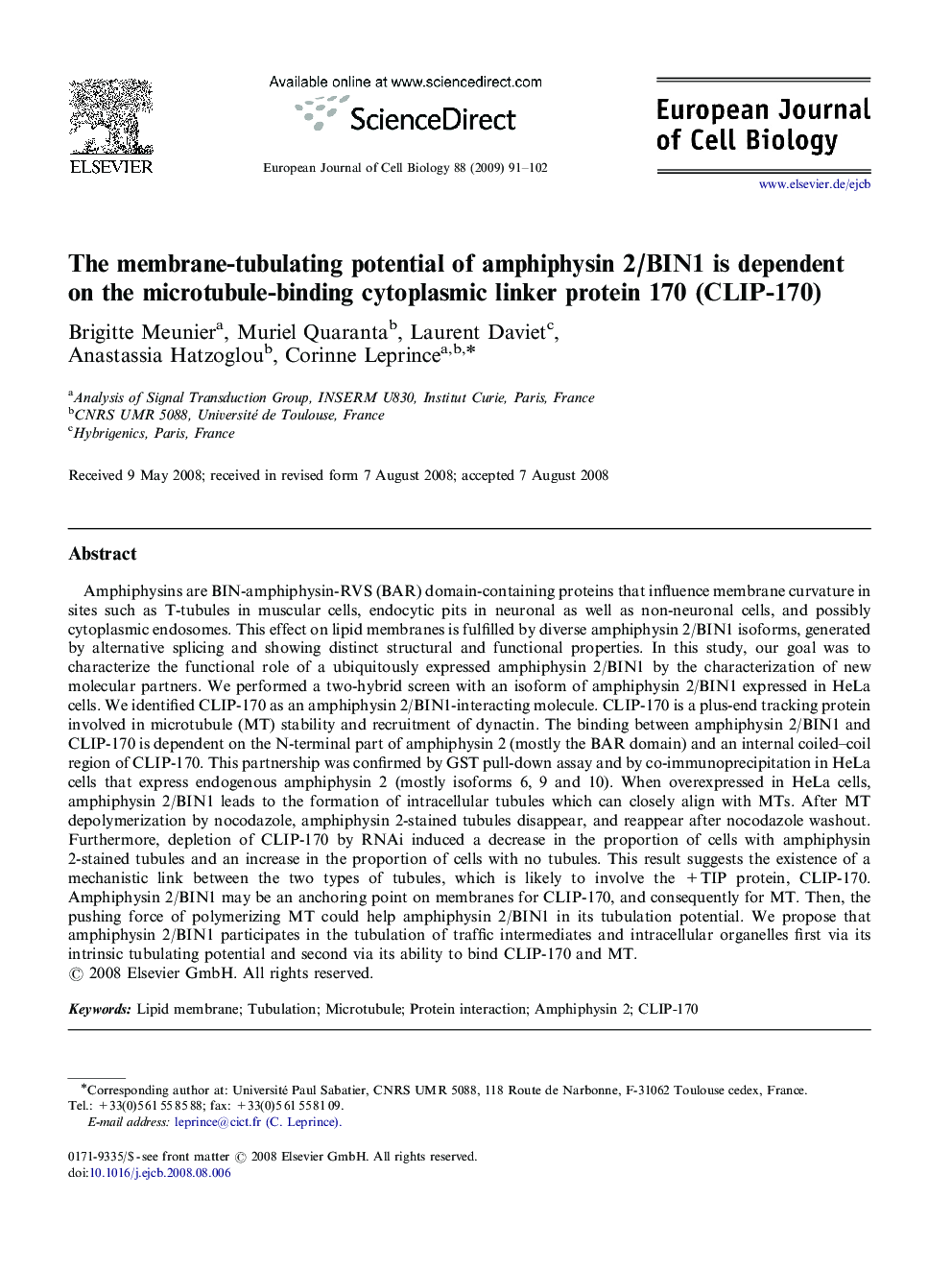| کد مقاله | کد نشریه | سال انتشار | مقاله انگلیسی | نسخه تمام متن |
|---|---|---|---|---|
| 2179060 | 1549741 | 2009 | 12 صفحه PDF | دانلود رایگان |

Amphiphysins are BIN-amphiphysin-RVS (BAR) domain-containing proteins that influence membrane curvature in sites such as T-tubules in muscular cells, endocytic pits in neuronal as well as non-neuronal cells, and possibly cytoplasmic endosomes. This effect on lipid membranes is fulfilled by diverse amphiphysin 2/BIN1 isoforms, generated by alternative splicing and showing distinct structural and functional properties. In this study, our goal was to characterize the functional role of a ubiquitously expressed amphiphysin 2/BIN1 by the characterization of new molecular partners. We performed a two-hybrid screen with an isoform of amphiphysin 2/BIN1 expressed in HeLa cells. We identified CLIP-170 as an amphiphysin 2/BIN1-interacting molecule. CLIP-170 is a plus-end tracking protein involved in microtubule (MT) stability and recruitment of dynactin. The binding between amphiphysin 2/BIN1 and CLIP-170 is dependent on the N-terminal part of amphiphysin 2 (mostly the BAR domain) and an internal coiled–coil region of CLIP-170. This partnership was confirmed by GST pull-down assay and by co-immunoprecipitation in HeLa cells that express endogenous amphiphysin 2 (mostly isoforms 6, 9 and 10). When overexpressed in HeLa cells, amphiphysin 2/BIN1 leads to the formation of intracellular tubules which can closely align with MTs. After MT depolymerization by nocodazole, amphiphysin 2-stained tubules disappear, and reappear after nocodazole washout. Furthermore, depletion of CLIP-170 by RNAi induced a decrease in the proportion of cells with amphiphysin 2-stained tubules and an increase in the proportion of cells with no tubules. This result suggests the existence of a mechanistic link between the two types of tubules, which is likely to involve the +TIP protein, CLIP-170. Amphiphysin 2/BIN1 may be an anchoring point on membranes for CLIP-170, and consequently for MT. Then, the pushing force of polymerizing MT could help amphiphysin 2/BIN1 in its tubulation potential. We propose that amphiphysin 2/BIN1 participates in the tubulation of traffic intermediates and intracellular organelles first via its intrinsic tubulating potential and second via its ability to bind CLIP-170 and MT.
Journal: European Journal of Cell Biology - Volume 88, Issue 2, February 2009, Pages 91–102